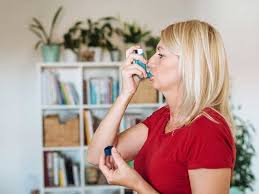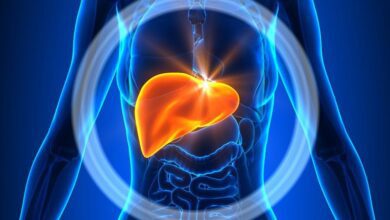Discover The Causes, Symptoms, Diagnosis, And Treatment Of Asthma
The Greek word “aazein,” which means “to exhale with an open mouth; to gasp,” is where the word “asthma” originates. With an estimated 14 million lost school days, this ailment is the most prevalent reason for school absences.
Since the 1970s, bronchial asthma has tended to progressively increase in prevalence; now, it is thought to afflict between 4 and 7 percent of the world’s population, with 3.3 percent of Indian children being affected.
In 155 centers across 56 countries, the ISSAC research looked at the incidence rates of bronchial asthma and atopic diseases in 7, 21,601 kids between the ages of 6 and 7 and 13 to 14 over the course of a year. Children aged 13 to 14 and 6 to 7 years saw annual increases in occurrences of +0.02 and +0.06 percent, respectively, across the Indian subcontinent.
The cause of asthma:
Studies show that viruses often infiltrate the lungs, suggesting that viruses are another possible underlying cause of asthma. Additionally, a substantial and well-known cause of pediatric asthma is second-hand cigarette smoke. Asthma is more likely to develop in toddlers of smokers than in those of nonsmokers, according to research.
Due to allergen contact, environmental pollution, chemical exposure, inherited factors, dietary decisions, and antibiotic use, asthma is becoming increasingly common in children aged one to fourteen.
Colds and other respiratory illnesses, feeding newborns, strong emotional responses like weeping or laughing, gastrointestinal reflux and shifts, and severe weather conditions may all cause asthma to flare up.
Identifying Asthma:
It may be challenging to diagnose asthma in children, especially those under the age of five. This is due to the fact that in infants and young children, the main symptoms of asthma, such as wheezing and coughing, may be brought on by other conditions.
Furthermore, it is difficult or inaccurate to conduct diagnostic tests on children under the age of five to establish how well or properly someone is breathing.
Children with asthma usually cough and wheeze, and they also have shortness of breath and chest tightness. Some signs that a kid may have asthma include breathing difficulties or shortness of breath, wheezing, a high-pitched whistle-like sound made while exhaling, and brief spells of coughing and wheezing interspersed with times of no symptoms.
Key indicators of asthma include recurrent infections or allergies that can cause seasonal changes, as well as frequent or chronic symptoms with periods of worsening wheeze and coughing.
Parents should seek emergency medical assistance if their kid is struggling to breathe, inhaling so forcefully that the abdomen is sucked under the ribs, or is having trouble speaking because of their restricted breathing. These are the potentially deadly signs of severe asthma.
Asthma homoeopathic treatment:
For young children with asthma, treatment goals include avoiding episodes by reducing inflammation in the airways and using natural medicines to manage the condition without side effects.
Children with asthma are treated holistically using homoeopathic medicines. It looks at all the changes and variations that take place on the physical, mental, and emotional levels in addition to the symptoms that a kid feels during an attack. This helps to assess changes in a child’s health and wellbeing.
When treating asthma, homoeopathic medicine takes into account both inherited and environmental causes. This completes the child’s constitutional picture and boosts immunity by addressing the actual cause of the disease rather than simply the symptoms or diagnosis.
Asthma attacks were less likely to recur after two years of using individually prescribed homoeopathic remedies, according to an Indian study on a group of kids with clinically-defined asthma who had previously received ineffective treatment from conventional medicine. To gauge the severity of the dyspnea, the results were evaluated.
The outcomes were examined after the designated two years. In 60.5% of children who had homoeopathic treatment for their asthma, the condition was determined to be under control, and in another 21%,’some control’ had been attained.
Arsenicum Album, MercuriusSolubilis, HeparSulphuricum, ArsenicumIodum, AntimoniumTartaricum, Pulsatilla, and CalcareaCarbonicum were the homoeopathic medications employed in the research.
Asthma symptoms may be reduced with homoeopathic therapy, which also addresses the underlying cause of the problem.
Among the homoeopathic medications that are often recommended for the illness are Antimonium Tart, which assists patients who awaken in the middle of the night with severe respiratory issues. The use of arsenic album ends coughing, wheezing, and breathing difficulties as well as episodes of asphyxia. Patients with a deep or barking cough should take sponge tosta.
Similar to how Ipecac is advised for respiratory issues that worsen with activity, Natrum Sulfur is given to individuals who have a persistent cough that produces green expectoration. These on-hand homoeopathic medications are often required since asthma attacks are more common and harsher between 4 and 5 in the morning.
When a kid is given homoeopathic asthma treatments, the symptoms have a far higher chance of gradually fading away and disappearing entirely.







